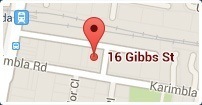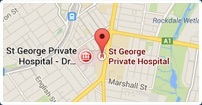I had a prostate operation & I still have problems.
Lower urinary tract symptoms (also known as LUTS) are a group of symptoms which include bladder storage problems (increased bladder sensation, frequency, getting up at night, urgency & urge incontinence), emptying symptoms (hesitancy, burning & stinging on passing urine, a slow intermittent stream & a sense of incomplete bladder emptying) & pain symptoms (pelvic, scrotal & urethral pain). LUTS increases with age in both men & women. It is common in elderly men & therefore usually considered synonymous with noncancerous prostate enlargement (also known as BPH). However, it has been estimated that only 25 -50% of men with BPH have LUTS & only 50% of men with LUTS have proven bladder outlet obstruction either due to prostate or urethral problems. Management of men with LUTS needs thorough assessment & investigations by both their general practitioner & then by a urologist.
Despite great advances in the diagnosis & treatment of LUTS, some men have poor results from medical or surgical management of their condition. 5-35% of men with BPH & LUTS do not have improved symptoms after a transurethral resection of the prostate. For men who have prostate surgery for retention (complete & sudden inability to pass urine) up to 9% of these men may still suffer the problem after catheter removal. This is generally attributed to primary bladder failure rather than an inadequate operation. In the past these men would require some form of ling term catheter drainage.
Recently a technology has been approved that now attract Medicare rebates called Sacral Neuromodulation. It is made by Medtronic who also produces heart pacemakers & deep brain stimulators. It is generally a 2 step surgical procedure. After you have been assessed & found to be appropriate for this technology, a temporary wire is placed through the skin of the lower back and attached to an external stimulator device. Over the next 5-7 days a detailed diary is filled out by the patient & then the urologist decides whether it is appropriate to place a permanent device. The temporary wires are removed & if there has been no improvement then there are no permanent scars or side effects. In effect you can “try before you buy”, if this preliminary test is successful then a permanent insertion is organised. Both procedures are done as day only admissions to hospital. Evidence from the randomized controlled trials showed that about 70% of patients achieved continence or exhibited an improvement of greater than 50% in their main incontinence symptoms. This technology is also being evaluated for pelvic pain syndromes & interstitial cystitis in both men & women. At Shire Urology we have an increased number of patients whose lives have been greatly improved by this technology.
We would be happy to discuss whether this technology is appropriate for you.
Dr Gerard Testa
MB BS FRACS
Urological Surgeon
Abstract as written for St George & Sutherland Leader (Tuesday June 7,2011)








